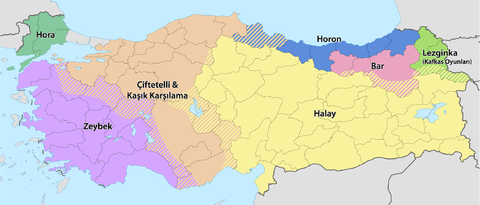| This article needs additional citations for verification. Please help improve this article by adding citations to reliable sources. Unsourced material may be challenged and removed. Find sources: "Bar" dance – news · newspapers · books · scholar · JSTOR (February 2022) (Learn how and when to remove this message) |

Bar is a folk dance from Armenian Highlands. The word bar is from the Armenian word "Պար" (bar) which means dance. With their structure and formation, they are the dances performed by groups in the open. They are spread, in general, all over the region of Eastern Anatolia, especially in Artvin, Ardahan, Erzurum, Bayburt, Ağrı, Kars, and Erzincan provinces. The characteristic of their formation is that they are performed side-by-side, hand, shoulder and arm-in-arm. Woman and man bars are different from one another. The principal instruments of bar dances are davul and zurna (shrill pipe). The dominant measures in bars are
8 and
8. Occasionally measures of
8 and
8 are also used. Aksak
8 measures which are the most characteristic measures, in particular, of the Turkish folk music are applied with extremely different and interesting structures in this dance.
A famous song of Bar is called 'Atabarı'.
| Middle Eastern music | |
|---|---|
| By style | |
| By region | |
| Related topics | |
References
This dance-related article is a stub. You can help Misplaced Pages by expanding it. |